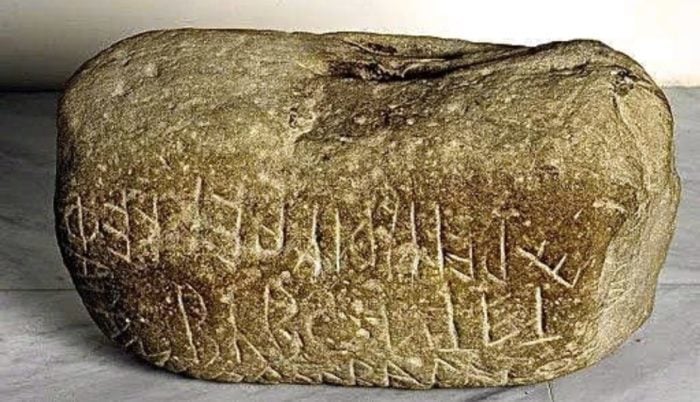
Ancient Greek weightlifter Bybon went down in history for the feat of lifting a 316-pound stone. In Ancient Greece, strength was greatly appreciated as a physical attribute.
Weightlifting was common among ancient Greeks, since their culture celebrated strength. Soldiers trained with weights and by doing gymnastics before battle, while weightlifting was a standard activity in gymnasia.
The strength of Hercules is at the top of the Greek mythological tales, with the hero performing unbelievable tasks with his supernatural physical power.
Yet stories of strong men were not confined to myth. The athlete Milo of Croton was said to have built his strength by carrying the same (growing) cow up a hill for weeks to become strong.
“What a disgrace it is for a man to grow old without ever seeing the beauty and strength of which his body is capable,” Socrates wrote.
The Ancient Greek weightlifter and his Stone
According to historical texts, Greek weightlifters used stone dumbbells which were not that heavy, weighing from 2 to 9 kilograms, for regular training.
This shows just how special the Stone of Bybon was.
Exhibited at the Museum of the History of the Olympic Games of Antiquity in Olympia, Greece, the large stone, weigings 143.5 kilograms (316 pounds) is nicknamed the Stone of Bybon.
The rock is actually a block of red sandstone with two deep notches carved out of it, forming a handle so that it could be used as a free weight.
The inscription on the stone is in boustrofedon format: an ancient Greek writing system having alternate lines written in opposite directions.
The inscription reads: “Bybon son of Phola, has lifted me over head with one hand.”
It sounds almost impossible to perform such an incredible feat of strength — since even modern athletes could not lift the stone despite all the progress in technology and knowledge of the human body’s capabilities.
There are no accounts of Bybon, this fearsome ancient Greek weightlifter, other than estimates that place him in the early 6th century BC. The stone was found in Olympia itself.
Weightlifting was not a sport in ancient Greece
Surprisingly, weightlifting was not an Olympic sport during ancient times — It was mainly for exercise to strengthen the body.
Ancient Greek bodybuilding relied on performing body weight exercises such as push-ups or pull-ups. Ancient Greek weightlifters then would use resistance in their strength training methods by lifting stones, logs, animals — or each other — to help increase their strength.
The Spartans were famous for their rigorous training, which included lifting heavy weights to gain the strength needed for victorious battles.
The achievement of the Greek weightlifter Bybon to lift such an unbelievable weight, however, was extraordinary, so it was celebrated with an inscription on the particular rock that was offered to the sanctuary in Olympia.
There is no other historical record of the ancient Greek weightlifter and the inscribed Stone of Bybon. However, the marvelous feat indicates that there indeed was a weightlifting culture in Greece before the Hellenistic era.
See all the latest news from Greece and the world at Greekreporter.com. Contact our newsroom to report an update or send your story, photos and videos. Follow GR on Google News and subscribe here to our daily email!



